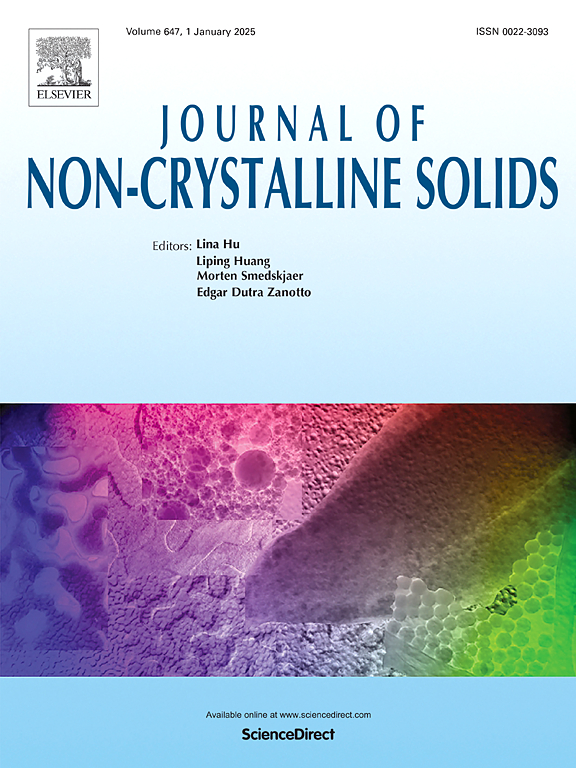On the chip formation process of a Zr-based bulk metallic glass: A systematic study
IF 3.2
3区 材料科学
Q1 MATERIALS SCIENCE, CERAMICS
引用次数: 0
Abstract
Zirconium-based bulk metallic glasses (BMGs) show significant challenges in machining for their excellent mechanical properties. In order to gain a comprehensive understanding of the BMGs machining, it is important to study the chip formation process. Firstly, the von Mises equivalent stress, temperature, equivalent plastic strain, and strain rate during the chip formation process were analyzed through finite element simulations (FEM). Subsequently, this study investigated the chip morphology of the BMGs. Energy dissipation analysis revealed that the energy consumed in serration formation process increased with increasing cutting speed, feed rate, and cutting depth. Finally, the Weibull distribution model was utilized to analyze the stability of the adiabatic shear band spacing under different cutting speeds. The results indicated that a lower cutting speed led to more stable chip formation and better surface quality. The present findings provide a theoretical basis for optimizing machining quality and enhancing surface performance of Zr-based BMGs.
zr基大块金属玻璃切屑形成过程的系统研究
锆基大块金属玻璃由于其优异的机械性能,在机械加工方面面临着巨大的挑战。为了全面了解bmg加工,对切屑形成过程进行研究是十分重要的。首先,通过有限元模拟分析了切屑成形过程中的von Mises等效应力、温度、等效塑性应变和应变速率;随后,本研究对bmg的芯片形态进行了研究。能量耗散分析表明,随着切削速度、进给速度和切削深度的增加,锯齿形形成过程中消耗的能量增加。最后,利用威布尔分布模型分析了不同切削速度下绝热剪切带间距的稳定性。结果表明,切削速度越低,切屑形成越稳定,表面质量越好。研究结果为优化zr基bmg的加工质量和提高表面性能提供了理论依据。
本文章由计算机程序翻译,如有差异,请以英文原文为准。
求助全文
约1分钟内获得全文
求助全文
来源期刊

Journal of Non-crystalline Solids
工程技术-材料科学:硅酸盐
CiteScore
6.50
自引率
11.40%
发文量
576
审稿时长
35 days
期刊介绍:
The Journal of Non-Crystalline Solids publishes review articles, research papers, and Letters to the Editor on amorphous and glassy materials, including inorganic, organic, polymeric, hybrid and metallic systems. Papers on partially glassy materials, such as glass-ceramics and glass-matrix composites, and papers involving the liquid state are also included in so far as the properties of the liquid are relevant for the formation of the solid.
In all cases the papers must demonstrate both novelty and importance to the field, by way of significant advances in understanding or application of non-crystalline solids; in the case of Letters, a compelling case must also be made for expedited handling.
 求助内容:
求助内容: 应助结果提醒方式:
应助结果提醒方式:


